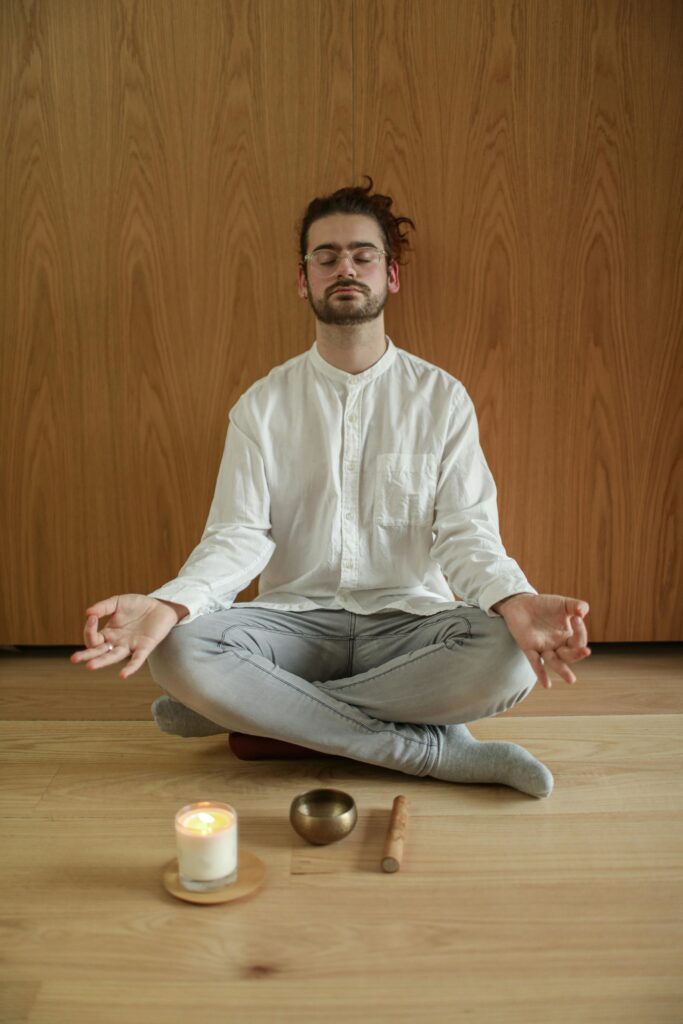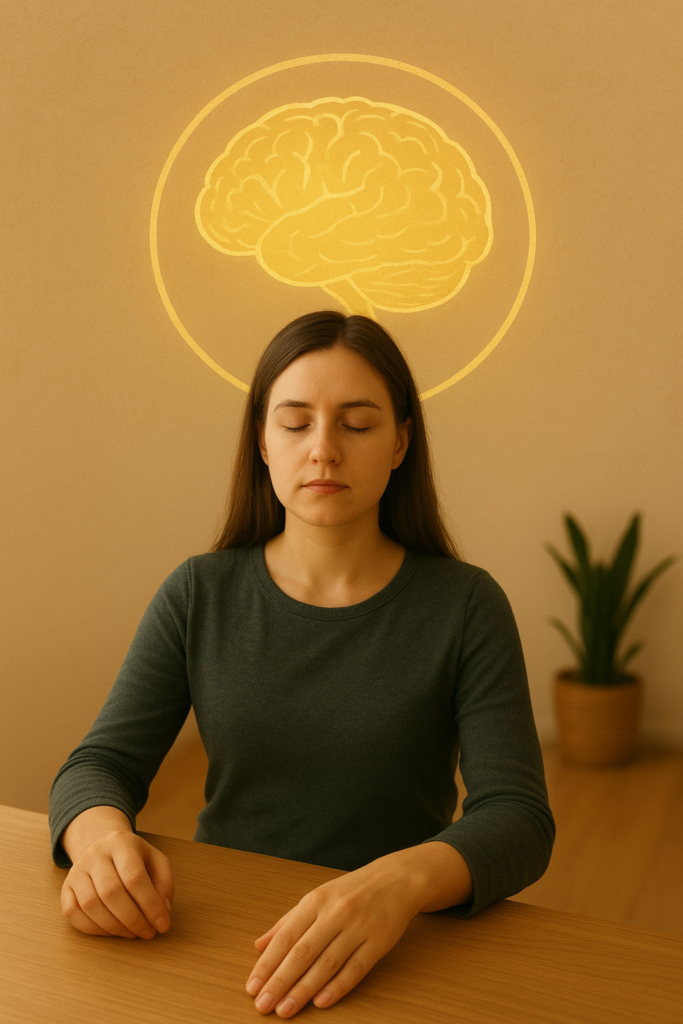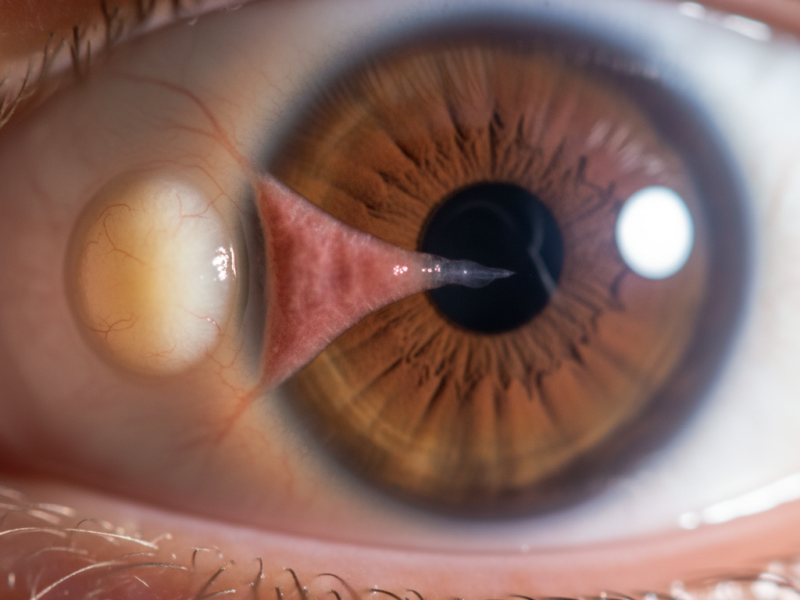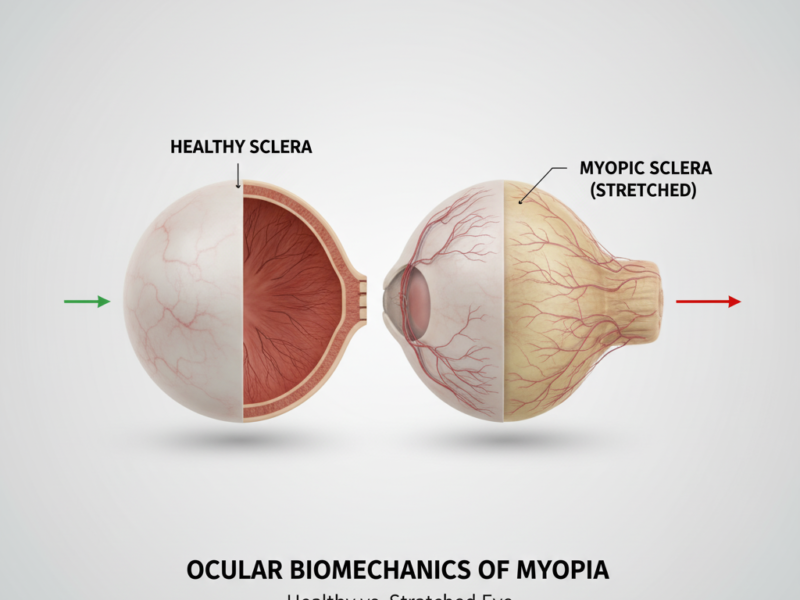👁️ Introduction: More Than Meets the Eye
We often think of eye health in physical terms — glasses, nutrition, or blue-light protection.
But what if your mental state could be just as important for your vision as your diet or screen time?
Recent neuroscience and ophthalmology studies show that stress, anxiety, and chronic tension directly affect how your eyes function. Tight muscles around the eyes, poor blood flow, and even reduced blinking rates can all be traced back to mental strain.
This is where meditation comes in — not as a mystical practice, but as a proven physiological reset for both the eyes and the brain.
Let’s explore how meditation can improve visual comfort, focus, and long-term eye health through the fascinating mind–body connection.
🧠 The Science Behind the Mind–Body Connection
Your eyes are not isolated organs — they are extensions of your brain. The optic nerve carries over a million nerve fibers that connect directly to the visual cortex, which processes everything you see.
When you experience stress, your body releases cortisol and adrenaline. These hormones constrict blood vessels, increase eye pressure, and reduce tear production. Over time, this leads to:
- Eye strain
- Blurred vision
- Twitching eyelids
- Headaches
- Difficulty focusing
Meditation activates the parasympathetic nervous system, also known as the “rest and digest” system, which:
- Lowers cortisol levels
- Improves oxygen flow to the eyes
- Reduces intraocular pressure
- Enhances focus and mental clarity
In simple terms: Meditation relaxes your mind, which relaxes your eyes.
🧘 Types of Meditation That Benefit Eye Health
1. Mindfulness Meditation
Focuses on observing thoughts and sensations without judgment.
When applied to vision, mindfulness helps you notice tension around the eyes and consciously relax those muscles.
How to practice:
- Sit comfortably and close your eyes.
- Focus on your breath for 5 minutes.
- Direct awareness to your forehead, eyelids, and eye muscles.
- Release any tightness with each exhale.
2. Trataka (Candle Gazing Meditation)
An ancient yogic technique specifically designed to strengthen eye muscles and improve focus.
How to practice:
- Sit in a dark, quiet room with a candle at eye level, 2–3 feet away.
- Gaze at the flame without blinking for as long as comfortable.
- Close your eyes and visualize the flame between your eyebrows.
- Repeat for 3–5 minutes daily.
💡 Benefits: Improves concentration, focus, and tear stability.

3. Guided Visualization
This involves mentally picturing calming images — such as natural landscapes or soft colors — which can reduce mental fatigue and visual stress.
How it helps:
Visualization activates the same parts of the brain used for seeing, effectively giving your eyes a mental workout without strain.
4. Breathing Meditation (Pranayama)
Controlled breathing enhances oxygenation, which supports eye tissues and optic nerve health.
Try this exercise:
Inhale slowly for 4 seconds, hold for 4, exhale for 6.
Repeat for 3 minutes, focusing on the cool air entering your nostrils.
🌿 Physiological Benefits of Meditation for the Eyes
| Eye Function | Meditation Effect |
|---|---|
| Intraocular Pressure | ↓ Reduces by up to 20% in glaucoma patients |
| Blood Circulation | ↑ Improves oxygen and nutrient delivery |
| Tear Production | ↑ Stabilizes tear film, reduces dryness |
| Eye Muscle Tension | ↓ Relaxes surrounding facial muscles |
| Focus & Concentration | ↑ Sharpens visual attention |
🧬 Scientific note:
MRI scans show that long-term meditators have thicker grey matter in regions responsible for sensory processing — including the visual cortex.

🌞 Morning Meditation for Vision Clarity (5-Minute Routine)
- Sit near a window and take 3 deep breaths.
- Gently close your eyes and visualize sunlight entering your eyes, nourishing them.
- Feel gratitude for your vision and the ability to see.
- Slowly open your eyes and focus on an object 10–15 feet away.
- Blink 10 times and stretch your face muscles.
Practicing this daily trains both your focus and relaxation response.
🌇 Evening Meditation for Eye Relaxation (10-Minute Routine)
After long screen hours, try this digital detox meditation:
- Turn off all screens.
- Sit or lie down comfortably in dim light.
- Inhale deeply, imagining tension leaving your eyes.
- Place warm palms gently over your closed eyes for 2 minutes (palming).
- End with slow, rhythmic breathing and gratitude.
🪄 Combining Meditation with Eye Exercises
For best results, pair meditation with light eye exercises:
- Eye rotations (clockwise & counterclockwise)
- Near–far focusing
- Gentle blinking
Meditation relaxes the nervous system, while exercises train the ocular muscles — together forming a holistic approach to visual wellness.
🍃 Lifestyle Habits That Complement Meditation
- Maintain a consistent sleep schedule — REM sleep restores ocular lubrication.
- Spend 15 minutes outdoors daily for natural light exposure.
- Limit caffeine and alcohol — they dehydrate the eyes.
- Use the 20-20-20 rule during screen work.
- Eat foods rich in lutein, omega-3, and vitamin A (spinach, salmon, carrots).
💬 FAQ – Frequently Asked Questions
Q1: Can meditation actually improve eyesight?
It doesn’t change your prescription, but it can reduce strain, improve focus, and promote ocular blood flow, indirectly improving clarity and comfort.
Q2: How long should I meditate for eye health?
Even 5–10 minutes daily can reduce stress hormones and ease tension around your eyes.
Q3: Is Trataka safe for everyone?
Yes, but avoid it if you have active eye inflammation or glaucoma without consulting a doctor.
Q4: Does meditation help with dry eyes?
Yes — meditation lowers stress-induced dryness by stabilizing tear film and reducing cortisol.
Q5: When will I see results?
Most people report noticeable relaxation and less eye fatigue after 2–3 weeks of consistent practice.
✅ Conclusion: See Through Calm Eyes
Meditation won’t replace your glasses, but it can restore balance between mind, body, and vision.
By calming the nervous system, improving circulation, and reducing eye tension, meditation enhances not only how you see but how you feel in your daily life.
Take 10 minutes today to close your eyes — not to shut the world out, but to reconnect with it more clearly.



